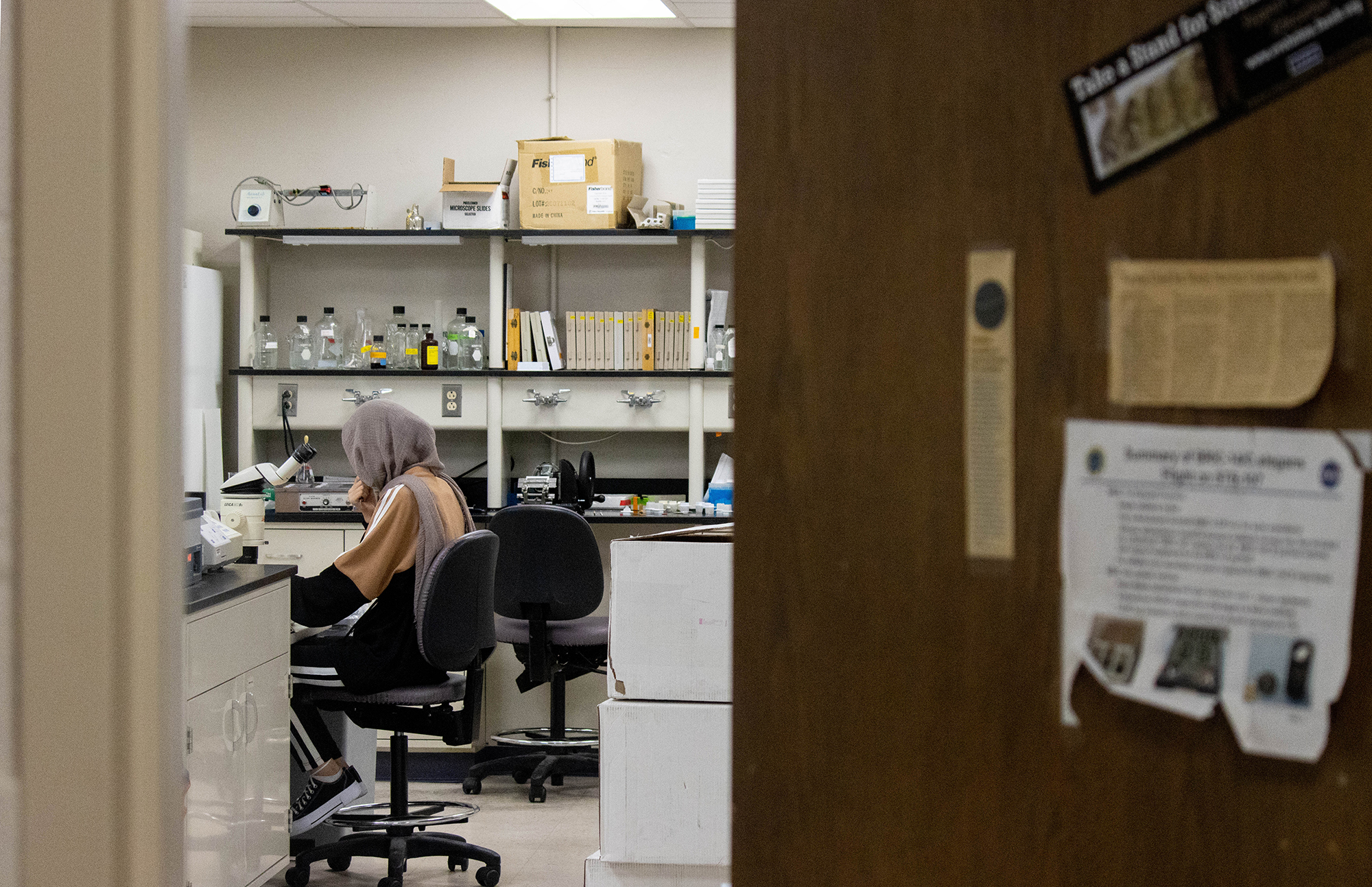Researchers at the University of Maryland are grappling with the impacts and uncertainty of President Donald Trump’s attempts to limit federal research funding.
The National Institutes of Health announced Feb. 7 it would cut billions of dollars in funding to major research institutions — including this university — by capping the amount of “indirect” research costs the institutions can charge to the government.
Indirect costs are general expenses related to facilities and administration, including property improvements, equipment upgrades and personnel, according to guidance the NIH published with its announcement. These costs comprised about $9 billion of the $35 billion in funds the NIH granted last year, according to the announcement.
Some research institutions charge the government nearly 70 percent indirect cost rates, according to the announcement, but the NIH said the government will now only cover up to 15 percent.
This university’s current indirect cost rate for on-campus projects is 56 percent, vice president for research Gregory Ball wrote in a statement to The Diamondback Thursday.
“It’s difficult at this time to come up with firm numbers about the potential impact of the NIH policy change because developments at the federal level continue to shift,” he wrote. “But going from 56 percent to 15 percent would be a tremendous loss.”
After the funding cuts’ announcements, Maryland Attorney General Anthony Brown joined 21 other state attorneys general to file a lawsuit on Monday against the Trump administration, the Department of Health and Human Services and the NIH for “unlawfully cutting funds that support cutting-edge medical and public health research.”
A federal judge temporarily blocked the NIH’s funding cuts from going into effect on Monday.
[Maryland could face up to $1.5 billion in additional budget cuts]
The research funding cuts came more than a week after Trump issued an executive order to pause federal spending on grants and loans on Jan. 27, the Associated Press reported.
Though the Office of Management and Budget rescinded its initial funding freeze directive on Jan. 29 after a federal judge blocked it from taking effect, some graduate students still experienced halted funding to their research grants, according to Keegan Clements-Housser, this university’s Graduate Student Government operations director.
“Disastrous is an understatement,” Clements-Housser said about the funding cuts. “I don’t think we necessarily have a full understanding of how catastrophic it is, but it’s pretty bad, even from what little we can see.”
Brown wrote in a news release Monday that the cuts could affect more than $300 million in NIH funding to this university and the University of Maryland, Baltimore, with additional funding cuts to other Maryland higher education institutions.
Even people who are not engaged in research could be affected by federal research funding cuts, Clements-Housser said, pointing to those who receive grants for administrative or office support. The journalism doctoral candidate called the grant freezes an “ongoing issue.”
The NIH’s recent announcement also caused many faculty researchers to wonder what the funding cuts could mean for their future projects.
Linguistics associate professor Ellen Lau, who studies the neuroscience of language, has research proposals under review with the National Science Foundation, the non-medical counterpart to the NIH. Lau is concerned the NIH and NSF could change their criteria for awarding grants, she said.
“If grants that people already submitted writing for one set of criteria end up being reviewed under a different set of criteria, it’s going to represent a lot of wasted time for scientists,” Lau said.
Biology department chair and professor Joshua Singer said he is personally “not planning any major new initiatives” because of the change and uncertainty.
But Singer said he is more worried about how the federal government’s treatment of grant funding could trickle down and affect students’ ability to start research at this university.
[Trump’s proposed federal funding freeze sends college students, parents in panic]
Lau listed heating, parking lot maintenance and helium deliveries as just a few indirect costs responsible for “keeping the lights on.”
She said the federal funding shouldn’t support just one project at a time, but instead create long-term stability to conduct research efficiently.
In a message sent to university research leaders on Monday, Ball wrote that this university is working with other schools in the University System of Maryland, the Association of Public and Land-grant Universities and the Association of American Universities to discuss “the profound negative impact [the lowered indirect cost rate] will have on universities and to oppose the measure from moving forward.”
“We understand that there is uncertainty within our community on how federal changes may impact you in your work, as well as you as individuals,” university president Darryll Pines and senior vice president and provost Jennifer King Rice wrote in an email to faculty and staff Thursday.
Through its new federal relations webpage and communication from administrators, this university plans to keep the campus community “informed with verified information and guidance,” the email read.
History professor Karin Rosemblatt, who is also the president of United Academics of Maryland, said community members need to be ready to push back against the funding cuts “in whatever form we can.”
“These restrictions … are very clearly a response to some of the great work that has been going on in our universities,” she said.
Junior staff writer Sanya Wason contributed to this story.



